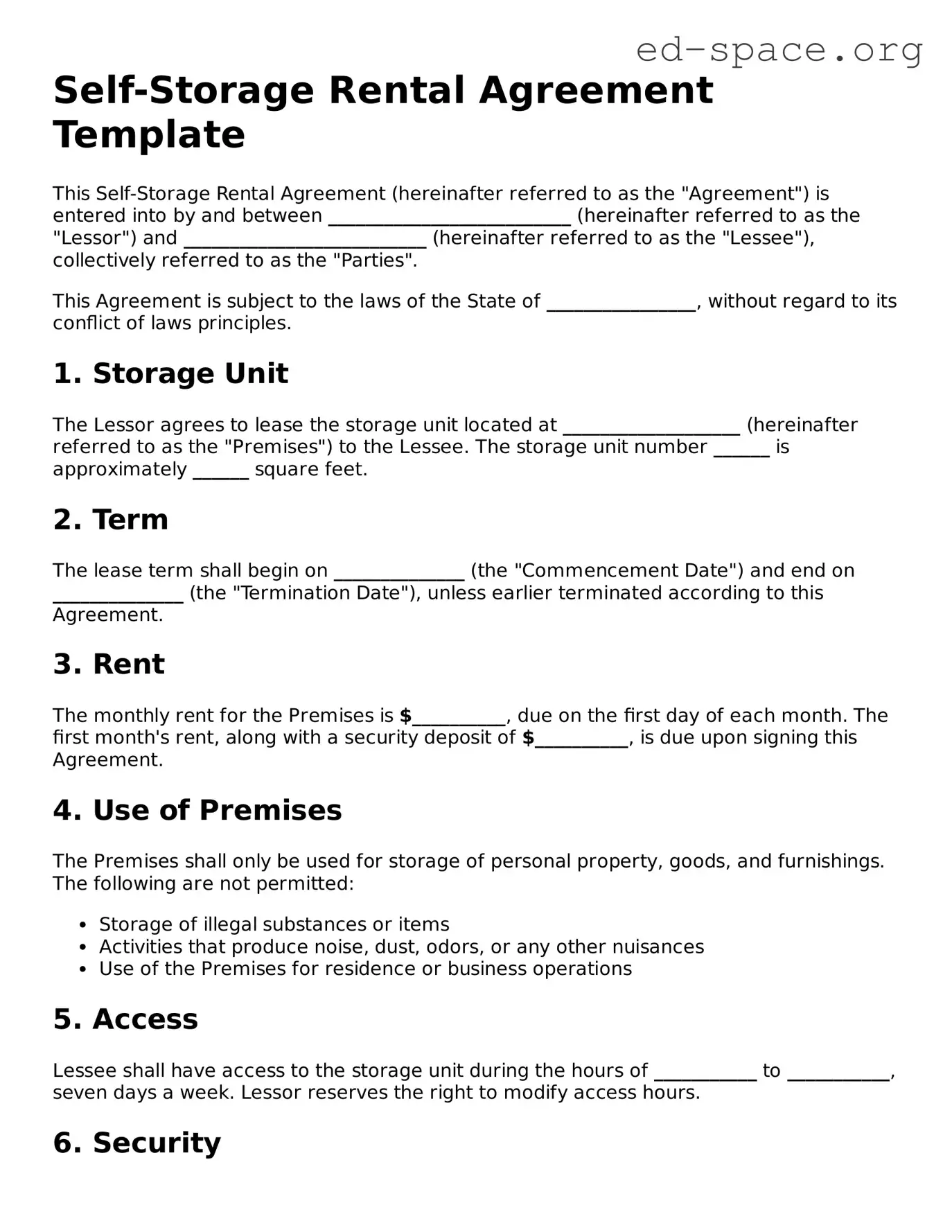What is a Self-Storage Rental Agreement?
A Self-Storage Rental Agreement is a legal contract between the owner of a self-storage facility and an individual or business that rents space within that facility. It outlines terms and conditions regarding the use of a storage unit, including payment, duration of the rental period, and the rights and responsibilities of both parties.
Who needs a Self-Storage Rental Agreement?
This agreement is necessary for anyone renting out storage space to individuals or businesses, as well as for those looking to rent a storage unit. It helps protect both the storage unit owner's property and the renter's stored possessions.
What should be included in a Self-Storage Rental Agreement?
Essential elements include the names and contact information of the renter and the storage facility owner, a description of the storage space, rental period, monthly rent, security deposit details, conditions for use of the facility, rules regarding prohibited items, and clauses related to termination of the agreement.
How long does a Self-Storage Rental Agreement last?
Typically, these agreements are set up on a month-to-month basis but can be structured for longer or shorter terms depending on the arrangement between the property owner and the renter.
Can I terminate a Self-Storage Rental Agreement early?
Yes, early termination is possible but usually requires notice from the party wishing to end the agreement, as detailed in the contract conditions. The notice period and any potential penalties for early termination should be clearly stated in the agreement.
What happens if a renter fails to pay the rent on time?
Late payment policies should be explicitly mentioned in the agreement. Typically, there may be a grace period followed by late fees. Continued failure to pay could result in restricted access to the storage unit and eventually, the contents of the unit being sold or disposed of, in accordance with the legal rights specified in the agreement.
Is a security deposit required for renting a storage unit?
While not always necessary, a security deposit may be requested by the storage facility owner to cover any potential damages or unpaid rent. The terms regarding the security deposit, including the amount, conditions for its return, and circumstances under which it may be withheld, should be detailed in the rental agreement.
Can the storage facility owner access the rented unit?
The owner's right to access the unit should be specified in the agreement. Generally, owners can access the unit for inspections, repairs, or in emergency situations, but they often need to provide notice to the renter beforehand.
Are there restrictions on what can be stored in a self-storage unit?
Yes, the agreement should list prohibited items, which commonly include perishable goods, flammable or hazardous materials, illegal items, and items of excessive value. This clause helps protect both the storage facility and the renter.
How can a Self-Storage Rental Agreement be terminated?
Termination clauses should outline how either party can end the agreement, including the notice period required and any responsibilities for clearing out the unit. Failure to follow these procedures can result in additional charges or legal action.
